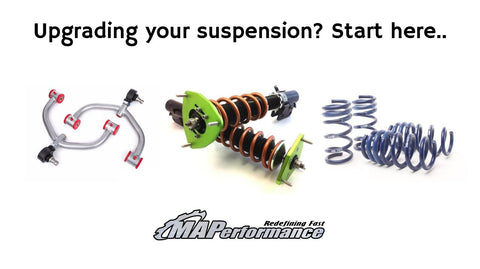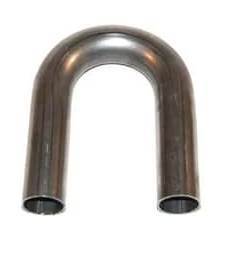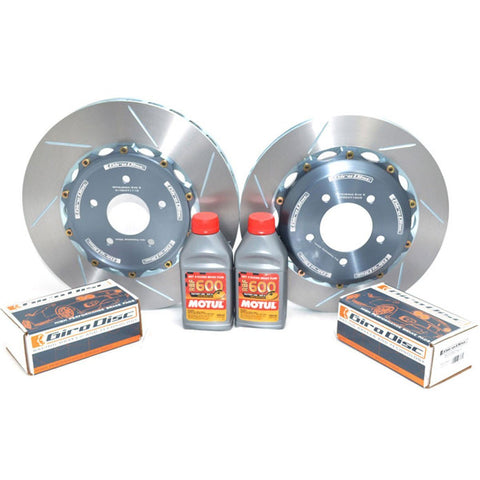The Perks of Upgrading Suspension
If you're upgrading your car's engine, consider making improvements to your suspension as well. The resulting lower stance not only creates an impressive appearance, but it also gives your car's performance a boost. A performance suspension lets you maximize your vehicle's power by stabilizing it to facilitate better turning and more effective braking. There are several popular suspension upgrades that can make a big difference to your car's handling. Whether you opt for one or more, make sure to source high-quality aftermarket parts for your upgrade.
Coilovers
What are coilovers? Basically, a coilover consists of a coil spring wrapped around a shock absorber. Your car's suspension may even include one from the factory. However, standard coilovers aim to provide a comfortable, cost effective drive for the average car owner. Upgrading to a performance coilover lets you retain the original comfort while optimizing the car's handling to work with its increased engine power. One common question people have is why they should purchase a coilover kit instead of buying performance shocks and springs separately. One important advantage is that you can manually adjust the coilover for a shorter or lower ride height. Lowering the height gets rid of the gap between the fenders and the tire tops. What's more, coilovers are very easy to adjust as finely as you need to and can give you a different height at each wheel, which can give you an edge when racing. Some coilovers offer a choice of settings, while others let you fine-tune your adjustments. The more you compress the coil of this mechanism, the more controlled and tight the handling of the vehicle becomes. A coilover suspension designed for racing may be optimized to reduce heat and increase strength. In addition to lowering the suspension, coilovers also offset many of the issues typically associated with doing so.
Lowering Springs
Another way to lower your car's suspension is through lowering springs. This means installing springs that are smaller in size than your factory ones. These springs will also have higher spring rates; thus, you may need to also install new dampers if the ones that come with your car are not properly valved for the ride height and spring rate. Performance in such a case can also benefit from upgrading the shocks, as not all shocks will be able to handle the higher spring rate. As with coilovers, these springs provide the benefits of a lower suspension: increased stability, better handling on corners and bumps, and improved aerodynamics. Some spring kits may even allow you adjust height.
Sway Bars
Aftermarket sway bars, sometimes also called anti-roll bars, are among the most cost-effective ways to improve the ability to handle a car on corners and during maneuvering. A sway bar is made of metal and connects the driver and passenger side suspension. While you will not feel its presence driving down a straight road, the bar works during turns and controls the weight shift that happens. Because the bar resists twisting, it controls car roll. As a result, when turning, you will notice that the car is more level. This lets you control it better and to accelerate quicker. This way, bars improve both safety and driving performance. The stiffer the bar, the more control you will have, especially on a twisty road or track. However, increased stiffness can also amplify the impact if you hit a dip or bump. An aftermarket bar will typically be stiffer than a stock bar. Some bars are adjustable, allowing you to regulate based on driving conditions.
Air Suspension
Air suspension kits generally consist of air compressors, suspension air bags and air struts. They can provide a greater degree of adjustability over a normal suspension system based on shocks and struts. You can adjust rebound, as well as ride height. This type of suspension can provide an advantage if it is necessary to transport loads with higher weights.
Additional Performance Suspension Components
When upgrading your vehicle's suspension, you may also consider additional options, depending on your needs. If you travel in bumpy conditions, you may need aftermarket shock absorbers. Some of these may allow you to adjust settings, whether manually or electronically. These shocks can be helpful in helping you maintain both speed and stability when traveling over rough terrain. Some drivers may opt to install aftermarket wheels or tires. Larger wheels can offer a boost to handling and improve stability. Many switch out their wheels because they prefer the appearance this creates. If installing new wheels, you may need to check whether doing so has affected wheel tilt. A camber kit can help adjust alignment if putting in the new wheels has changed it. Some also opt to install camber plates simply as an additional performance item. Adjustable plates provide more precision and range over factory-installed camber bolts. Tires can make a bigger difference in areas such as handling, comfort, noise control and fuel economy. Another reason to upgrade tires is that they can improve performance when driving in winter weather. Another way to make the ride stiffer and thus improve handling is to install stiffer bushings than the stock rubber ones. Like other methods of reducing the give of a typical suspension system, this can boost performance by making the car easier to handle, but may decrease comfort on an uneven road surface. A performance suspension can consist of various components. You may decide to install just one or several of these. In each case, it is essential to choose high-quality parts that are appropriate for your vehicle and the type of performance you need.





Comments (0)
There are no comments for this article. Be the first one to leave a message!